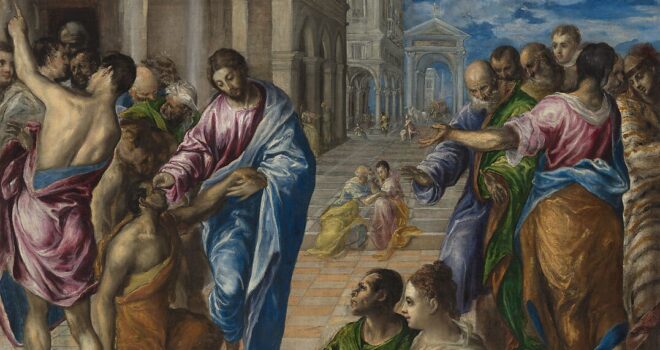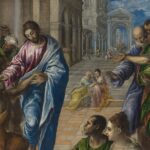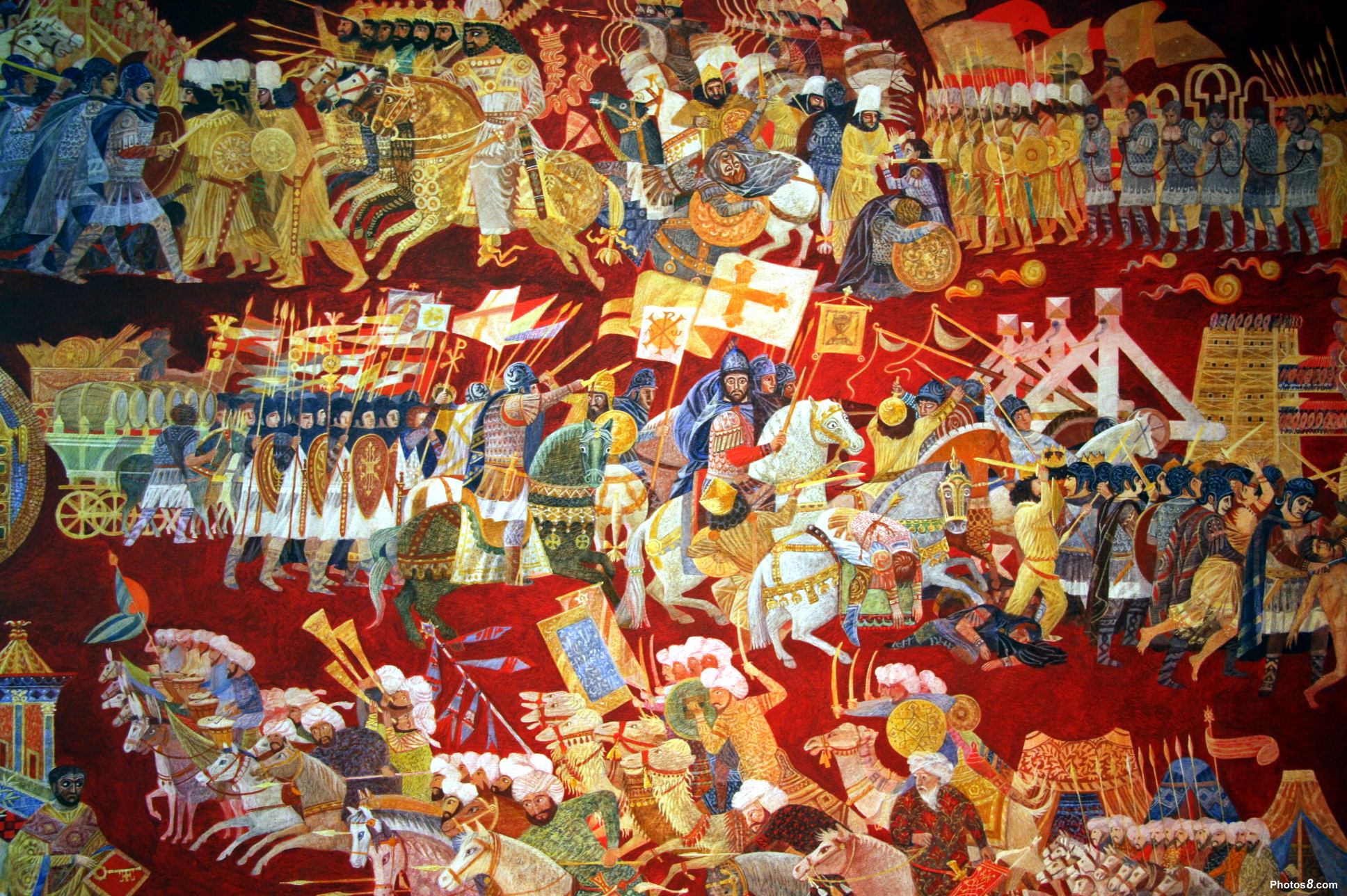The Three Messianic Miracles: Part 2
In the first segment of this article, we covered the basis for the announcement of the three messianic miracles by the Jewish rabbis prior to the time of Jesus. In addition, we discussed the biblical support for the first of these miracles that Jesus performed, which was the cleansing of the leper. Now we will […]



In the first segment of this article, we covered the basis for the announcement of the three messianic miracles by the Jewish rabbis prior to the time of Jesus. In addition, we discussed the biblical support for the first of these miracles that Jesus performed, which was the cleansing of the leper. Now we will proceed to discuss the other two messianic miracles.
The second messianic miracle, the casting out of a mute spirit from a possessed person, is well documented in chapter 11 of Luke’s Gospel.
He was driving out a demon that was mute, and when the demon had gone out, the mute person spoke, and the crowds were amazed. Some of them said, “By the power of Beelzebul, the prince of demons, he drives them out. (Lk 11:14-15)
The Pharisees and rabbis were so shocked at this miracle that they blurted out a ridiculous charge. Jesus responded to this charge by plainly exposing its illogical nature:
Every kingdom divided against itself will be laid waste and house will fall against house. And if Satan is divided against himself, how will his kingdom stand? If I, then, drive out demons by Beelzebul, by whom do your own people drive them out? (Lk 11:17,19)
At this point it is made clear that the authorities had no intention to proclaim Jesus the Messiah. As a result, we notice that from this point on Jesus taught principally in parables—as prophesized by Isaiah:
This is why I speak to them in parables, because “they look but do not see and hear but do not listen or understand.” Isaiah’s prophecy is fulfilled in them. (Mt 13:13-14)
Which leads us to the third and final messianic miracle, the healing of the man born blind. This miracle is explained in the entirety of chapter 9 of John’s Gospel. The miracle is performed on the Sabbath, which the gospel tells us coincided with the celebration of the Feast of Tabernacles.
This feast was one of the three great annual feasts (along with Passover and Pentecost) that every male of adult age had to journey to Jerusalem to appear before the Lord in his Holy Temple—regardless of where they lived! The first century Jewish historian Josephus wrote that the year-round population of Jerusalem was approximately 400,000 inhabitants, but during the celebration of each of these three high feasts, the city would have had upwards of 2,500,000 occupants.
You may wonder why this Feast is significant to the third messianic miracle. John’s Gospel states that after mixing clay with His saliva, Jesus smeared the clay on the blind man’s eyes and said to him, “go wash in the Pool of Siloam.” Now it’s important to note that the Pool of Siloam was used during part of the Jewish ritual observed for the Feast of Tabernacles. As a result, it would have drawn a large crowd of people who wished to partake in that part of the ritual.
Imagine the excitement among this large crowd when the man gained his sight before their very eyes. And how that excitement would have intensified upon learning that he had been blind from birth! Surely, the Jews would have already heard that Jesus had performed the first two messianic miracles previously.
The man who once was blind was promptly brought before the Pharisees. What ensued was a strenuous effort on the part of the Pharisees to discredit this miracle. First, by claiming it unlawful because it was performed on the Sabbath; secondly, by denying that the man had been blind; and lastly, by going so far as to intimidate the man and his parents into testifying falsely that he had not been born blind—they threatened expulsion from the synagogue. Why were the Pharisees so vigorous in their efforts to undermine the validity of this miracle?
In fact, in all of Jesus’ documented miracles, even in the raising of Lazarus, none comes close to demonstrating the level of viciousness and desperation of the rabbis as these, at the fulfillments of the second and third messianic miracles.
The irony in this is truly astounding! Think about it for a moment. The very ones who established the criteria of the three messianic miracles in the first place are the ones who vigorously oppose the One who fulfills them. Their desperation grows with each messianic miracle fulfilled.
Why then were the authorities so hellbent on denying that Jesus was the Messiah? There were several reasons, but each of them had at their root the belief that Jesus did not conform to the image of who they felt the Messiah should be. Said another way, their pride blinded them to the reality of who stood before them.
Take for instance, one of their objections to Jesus’ messianic claim was that He held Himself out to be the Son of God. And yet, the passage above from Isaiah, that they themselves used in deriving the three messianic miracles, categorically states that “God comes with vindication; with divine recompense he comes to save you.” In this verse, the very meaning of Jesus’ name is revealed: “God who saves.”
So how did the people, who were taught by the rabbis about these three messianic miracles, deny the messianic claim of Jesus when they knew He had performed all three of the miracles? It’s referred to as the leadership complex. A leadership complex is a sociological phenomenon whereby people generally follow their leadership’s decisions. They do so assuming that those in positions of authority have greater knowledge and abilities than they themselves have, and further that they have the people’s best interests in mind. Sound familiar?
And so, when the Jewish authorities charged Jesus with blasphemy for holding Himself out to be God, the majority of the people accepted their leaders’ decision in condemning Him to death, despite their hesitations.
To be clear, the three messianic miracles were formulated by man and imposed upon God to fulfill as a precondition for the Jews to believe in His Messiahship. Jesus could have refused to comply but, to save as many as possible, chose to fulfill the three messianic miracles. Despite witnessing these miracles, the Pharisees put Him to death. What more could He have done? Oh, the hardness of man’s heart and the tenderness of His Sacred Heart!
Author’s Note: I owe a great debt of gratitude to Dr. Arnold G. Fruchtenbaum for his extensive work on this subject. His work is the basis for most of the information contained this article. I found that after having read his work, my understanding of the four gospels changed by virtue of an entirely new perspective. As a result, a new context was opened to me to better enable me to view the life and works of Jesus as expressed in the four gospels. I, like many Catholics, had never heard of this until I came across his book, Footsteps of the Messiah, or for a more condensed version his article entitled “The Three Messianic Miracles.”
El Greco. (1570). Christ Healing the Blind [oil on canvas]. Retrieved from The Met.














